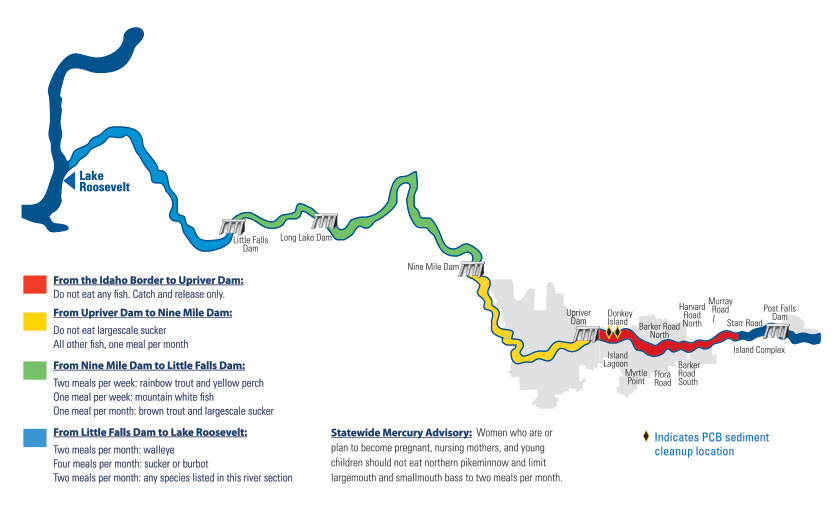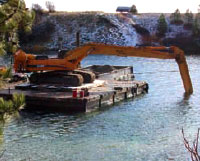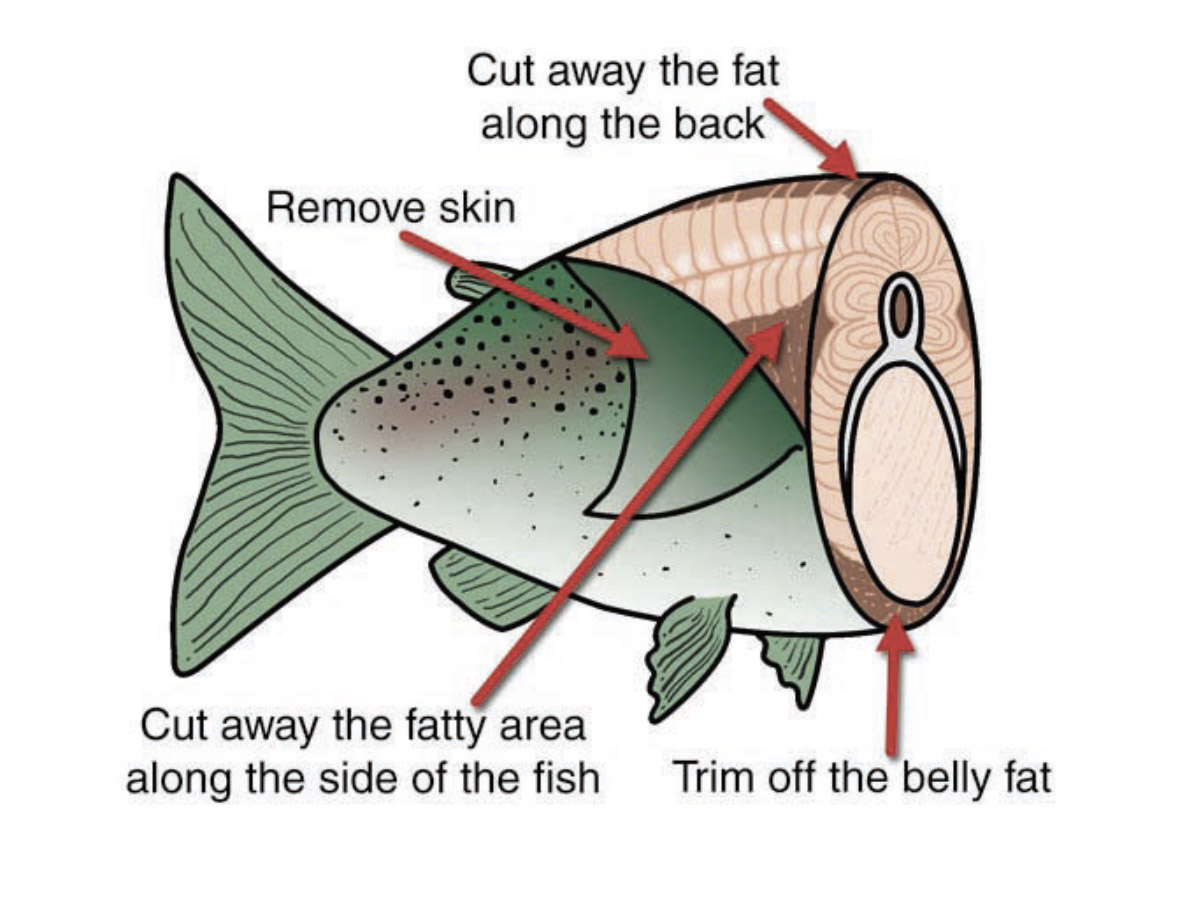Fish Consumption Advisory & Cleanup
The Washington Department of Health updated a fish consumption advisory for PCBs in 2008. PBDEs and metals have also been detected at elevated levels in fish tissue. Idaho has issued no fish consumption advisories for the Spokane River. Click image below to enlarge, or click here to download printable pdf version.

To reduce your exposure when eating fish:
Prepare fish the following way to reduce PCBs and other contaminants that collect in the fatty parts of the fish by up to 50 percent:
- When cleaning fish remove the head, skin, fat, and internal organs before cooking. Do not use for sauce or gravy.
- Grill, bake, or broil fish so that the fat drips off while cooking.
- Mercury is stored in the muscle (fillet) of fish and cannot be reduced by cleaning this way.

Cleanup and Restoration
Ecology’s Cleanup Program is leading efforts in areas between Upriver Dam and the Idaho Stateline where contaminated sediment deposits pose human health or ecological risks. Thus far four recreational areas and two habitat areas have been
cleaned up. In the next two to four years, five more recreational areas will be cleaned up.
Cleanup Actions to Date
2008
Capping (isolation) and removal of contaminated sediments at Harvard Road public access recreation area. Also, an improved boat launch and parking area were completed.
2007
Cleanup at the Island Complex and Murray Road created safe river-side public recreation areas.
2006
As directed by Ecology, sediments just upstream of Upriver Dam were successfully “capped.” Further, contaminated sediments were removed from a sensitive backwater area known as Donkey Island, which is adjacent to the Centennial Trail.
Ecology, in coordination with EPA, cleaned up and established the Starr Road recreational area.
In Idaho, no shoreline cleanup activities of contaminated sediments have been initiated or are planned.

